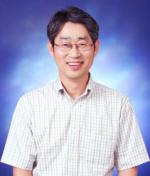"Functional MRI at Ultra High Resolution: Accuracy and Physiology"
Date
Abstract: High-resolution fMRI can be obtained with advanced imaging technologies at high magnetic fields. The major question is whether active foci detected by fMRI is genuine. This issue has been examined using well-known animal models at 9.4 T; cat orientation columns, and rat olfactory bulbs. Our data shows spatial accuracy is dependent on imaging contrast (blood flow, volume, oxygenation level) and evolution time. I will show our fMRI results and interpretation of human fMRI data.
461 America/Los_Angeles publicType
Time Duration
Location
Abstract: High-resolution fMRI can be obtained with advanced imaging technologies at high magnetic fields. The major question is whether active foci detected by fMRI is genuine. This issue has been examined using well-known animal models at 9.4 T; cat orientation columns, and rat olfactory bulbs. Our data shows spatial accuracy is dependent on imaging contrast (blood flow, volume, oxygenation level) and evolution time. I will show our fMRI results and interpretation of human fMRI data.
Speakers

Center for Neuroscience Imaging Research,
Institute for Basic Science (IBS);
Depts. of Biomedical Engineering and Biological Sciences,
Seong-Gi Kim, Ph.D., is the Director of Neuroscience Imaging Research Center in the Institute for Basic Science, and Professor of Sungkyunkwan University (SKKU). He did his graduate works on in vivo NMR spectroscopy (1984-88) at Washington University, and postdoc training on structural biology at the University of Washington. In 1991, he moved to the Center for Magnetic Resonance Research in the University of Minnesota and involved into the first human fMRI studies in 1992. After advancing his rank to full Professor, he moved to the University of Pittsburgh at 2002. He was appointed as the inaugural Paul C. Lauterbur Chair in Imaging Research at 2009, which was created for honoring a Nobel laureate and MRI inventor. Recently he returned to Korea for setting up a new imaging center. His major research focus is to develop magnetic resonance imaging techniques for measuring brain physiology and function, to determine relationships between neural activity and hemodynamic responses, and to apply imaging tools for answering neuroscience questions.
